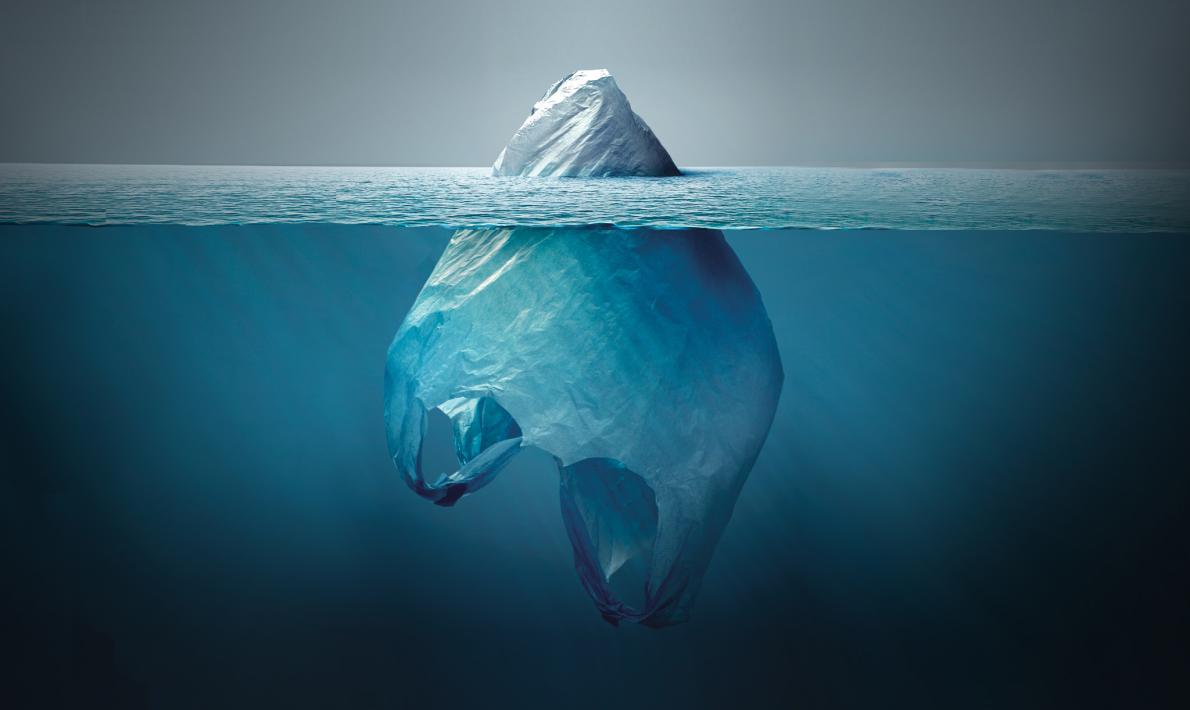
Planet or Plastic? What you need to know about plant-based plastics!
Planet or Plastic?
What you need to know about plant-based plastics
by Maanushi Rana Joshi May 12, 2020
More than 18 trillion pounds of plastic have been produced to date, with 18 billion pounds of plastic flowing into the ocean per year. This ensnares the aquatic species that we love and the food that we place on our tables, this exists in the table salt that we use, and it’s even found in our bodies.
As more research on the impact of using so much plastic comes to light, consumers and suppliers are left looking for an alternative to abundant packaging, and bioplastics have arisen as a possible substitute.
Upon a glance, the name looks appealing, with a prefix that indicates an Earth-friendly commodity. Yet is bioplastic the panacea for our environmental problems? An easy-to-use single-use object that looks like a disposable without a shame object?
The answer?
It’s complicated, say, scientists, manufacturers, and environmental experts, who warn its potential merits rest on many “ifs.”
What is Bio-Plastic, how they’re greener than traditional plastics, and why they’re not a perfect solution?
Plastics are an integral part of our lives, but they also pose some big environmental challenges on our lives.
They generate a lot of waste, most of which isn’t recycled. A new analysis by Environment and Climate Change Canada showed that only in our country, just nine percent of the plastics recovered are either incinerated, disposed of, or disposed of in the field, where they can damage animals such as dolphins, turtles or seabirds. These are two of the reasons the federal government plans to prohibit certain single-use plastics by 2021.
Plastic processing and incineration also produces greenhouse gas emissions related to climate change. A 2019 report by the Centre for International Environmental Law predicts that if plastics production continues at its current rate, plastics pollution could hit 1,2 gigatonnes each year, equal to 295 new 500-megawatt coal-fired power plants.
“Bioplastics” aim to curb both those environmental impacts.
They’re one of the solutions touted by Canadian supermarkets who say they’ve taken steps to reduce the massive amounts of plastic waste they generate after a CBC Marketplace report found they’ve been slow to act. Marketplace will share their update on plastic waste in supermarkets Friday.
In the meantime, here’s what you need to know about bioplastics.
‘Bioplastic’ can mean 3 different things. Plastics are moldable plastics that are usually constructed from long chains of smaller molecules bound together, which is why their labels frequently begin with the "poly" prefix — for example, polystyrene or polyethylene.
Traditionally, they have been made from fossil fuels and take a very long time to break down in the environment — sometimes hundreds of years.
Bioplastics are plastics that can be:
- Biobased; that is, derived from biological sources such as corn, potatoes, wood, food waste, or lobster shells.
- Biodegradable, meaning they can be broken down by microbes into natural substances such as water, carbon dioxide, and compost under certain conditions.
- Both bio-based and biodegradable (some examples in the first bullet point fall into this category).
Many bioplastics aren’t biodegradable. And some are chemically identical to regular plastics.
The only difference between bio-polyethylene or bio-PET (used in Coke's 'PlantBottle') and standard polyethylene or PET is that the raw material from plants (ethanol) is used instead of fossil fuels to produce the same material.
Those kinds of plastics are known as “drop-in” plastics because they can be dropped in as direct replacements for traditional plastics and mixed with them in any quantity (the PlantBottle originally included 30 percent plant-based ingredients and 70 percent regular PET that still represents 7 percent of the company’s bottles sold around the world. Coca-Cola has since also made a 100 percent bio-PET version).
Because they’re identical, they take just as long as traditional plastics to break down.
Plastics made mostly or entirely from fossil fuels can be called ‘biobased’ and ‘bioplastics’, respectively.
To be considered a "biobased" commodity in the U.S. under the Department of Agriculture regulations (Canada does not have similar laws), it is only appropriate to include at least 25% of the carbon from biological sources as compared to synthetic ones — that is, up to 75% of the carbon can come from fossil fuels.
A plastic made of 100% fossil fuels can still be called a bioplastic if it is manufactured if it’s biodegradable.
For example, a plastic called PBAT (polybutylene adipate terephthalate), sold by chemical company BASF under the name “ecoflex,” is a complete fossil fuel-derived plastic that’s certified compostable and biodegradable — and is therefore considered a bioplastic.
Coca-Cola's first PlantBottle, launched for the Vancouver 2010 Olympics, featured 30% bio-PET. Since then, the company has developed a version that is 100% bio-PET. It's essentially the same as normal plastic bottles. (The Coca-Cola Company)
Bioplastics can help reduce carbon emissions. But not always a lot.
Bioplastics usually produce less carbon emissions over their lifespan relative to conventional plastics. That's because growing plants suck in and store carbon, which is released later when bioplastics are burnt or decomposed.
"You don't add extra carbon dioxide to the environment," said Amar Mohanty, a respected research chair in sustainable biomaterials at the University of Guelph, who has been designing and studying bioplastic and biobased materials for more than 30 years.
In practice, things are more complicated than that because energy is used to grow crops and for transportation, manufacturing, processing, and distribution — and that may generate emissions.
How big the difference in emissions is between the two can vary a lot depending on the types of biobased ingredients used, how they were grown, how locally the bioplastic was manufactured, what happened to it at the end of its useful life and exactly what plastics are being compared.
For example, one study showed that bioplastic PHA, produced from corn leaves, stalks, and husks, produces 80 percent less emissions per kilogram over its lifetime relative to fossil-derived PET or polystyrene.
A 2018 study by the European Commission’s Joint Research Centre found that in Europe there would be no real difference in lifetime emissions between traditional PET bottles and those made from bioplastics. That’s largely because regular PET is manufactured in Europe, while bio-PET is mostly manufactured in the U.S. and lots of emissions would be generated during transport.
As mentioned, some bio-based plastics are not biodegradable and can remain for hundreds of years. Some researchers have argued burying such plastics at their end of life is one way to store carbon captured by plants and keep it from getting into the atmosphere.
Compostable plastics often end their lives in places where they don’t break down.
The benefits of degradable or compostable plastics is that they can potentially mitigate the damage to animals and habitats done by conventional plastics and minimize the need for landfill sites, which is a concern in certain countries. That's because, under some conditions, they can be completely broken down into carbon dioxide, soil, and compost without leaving microplastics behind. Amar Mohanty describes it as “natural recycling”
That said, only common compost plastics such as PLA (polylactic acid), which are used to produce drinking cups, clamshell containers, and plastic cutlery, are not approved by most municipal and industrial composting systems in Canada and are usually transported to landfill sites, where one study predicted that it would take more than a century to break down and another found that they would emit a potent green product.
- What happens to the organic waste you put in your compost bin (Incase you want to make a home compost)
That said, even common compost plastics, such as PLA (polylactic acid), used for the manufacture of drinking cups, clamshell containers, and plastic cutlery, are not permitted by most municipal and commercial composting schemes in Canada and are typically shipped to landfill sites, where one study estimated that it will take more than a century to break down and another showed that they would release a polylactic acid.
Bioplastics are often recyclable but often aren’t recycled.
Bio-based forms of recyclable plastics, such as bio-PET, are, as predicted, recyclable with standard, fossil-fuel-based variants of the same material.
PLA is technically recyclable, too. Most recycling systems are not generally approved, although that can shift in the future.
Bioplastics could potentially have environmental drawbacks.
A variety of studies have estimated that huge net emissions are produced by transforming rainforests, peatlands, savannahs, or grasslands to agriculture to grow bioplastic crops.
But bioplastics are only a tiny fraction of plastic in the world today.
In 2019, land used to produce bioplastic crops accounted for just 0.016 percent of agriculture, according to an estimation by European Bioplastics, which serves the bioplastics industry in Europe.
It's only one percent of the 359 million tons of plastic generated worldwide last year, European Bioplastics reports.
How to cut down on plastics?
Why is life never simple? If you're keen on helping the planet, complications like this sound completely exasperating. But don't let that put you off. As many environmental campaigners point out, there are some very simple solutions to the plastics problem that everyone can bear in mind to make a real difference. Instead of simply sending your plastics waste for recycling, remember the saying "Reduce, repair, reuse, recycle". Recycling, though valuable, is only slightly better than throwing something away: you still have to use energy and water to recycle things and you probably create toxic waste products as well. It's far better to reduce our need for plastics in the first place than to have to dispose of them afterward.
You can make a positive difference by actively cutting down on the plastics you use. For example:
- Get a reusable upcycled bag and take that with you every time you go shopping.
- Buy your fruit and vegetables lose, avoiding the extra plastic on pre-packaged items.
- Use long-lasting items (such as razors and refillable pens) rather than disposable ones. It can work out far cheaper in the long run.
- If you break something, can you repair it simply and carry on using it? Do you really have to buy a new one?
- Can you give unwanted plastic items a new lease of life? Ice cream tubs make great storage containers; vending machine cups can be turned into plant pots; you can use old plastic supermarket bags for holding your litter.
- When you do have to buy new things, why not buy ones made from recycled materials? By helping to create a market for recycled products, you encourage more manufacturers to recycle.
One day, we may have perfect plastics that break down in a trice. Until then, let's be smarter about how we use plastics and how we get rid of them when we've finished with them.

Leave a comment